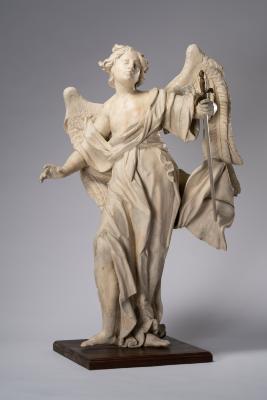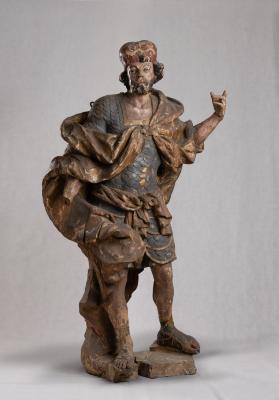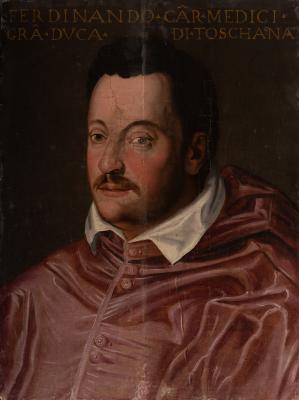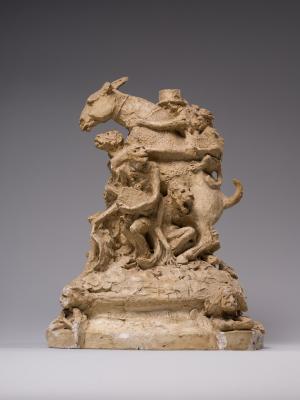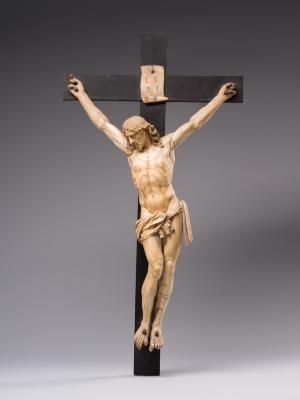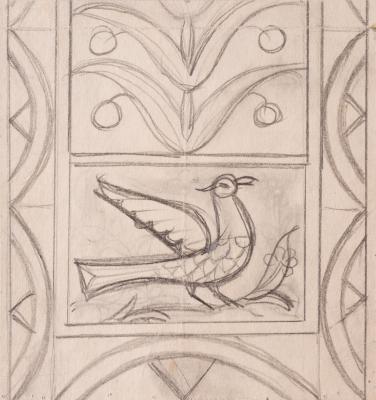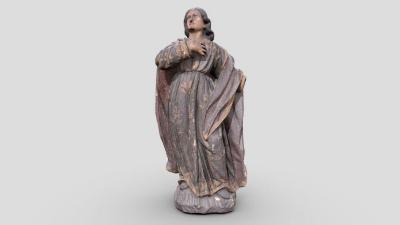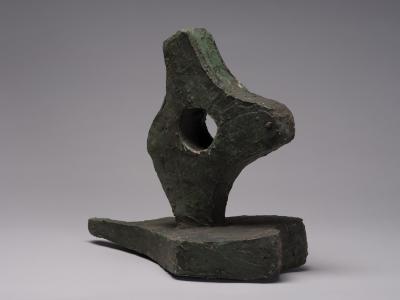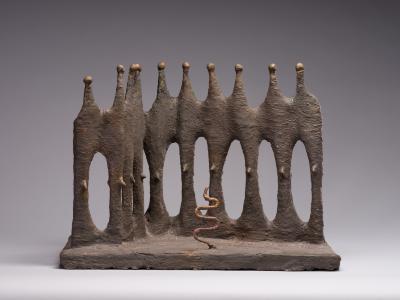This composition is from the Neapolitan series. The engraving is known in black and white version from the album Raccolta di Cinquanta Costumi li più interesanti delle città, terre e paesi in provincie diverse del Regno di Napoli (Collection of Fifty Most Interesting Picturesque Costumes from Cities, Towns and Villages of Different Provinces of the Kingdom of Naples) published in Rome in 1816. In the foreground, one can see a tall young man, a seller of spring water (acquajolo), and a girl. He is pouring water for her from a metal jar into a glass, and she is standing next to him, holding a water tube with a lemon and looking at him as if appraising the young seller. Both characters are dressed in typical Neapolitan clothing. A young man wears a white shirt, red vest, knee-length blue pants, white stockings, and black shoes with overlays. On his head is a black hat decorated with a branch with leaves on top of it, and a yellow neckcloth is tied in a knot on his neck. There is a box on the seller's belt (probably with lemon or berries); a jar and glasses are in his hands. The young girl is dressed in a white dress, a yellow apron, and a long skirt with pink edging and floral patterns. On her head is a headscarf tied in a knot on the back; on her feet are light red shoes. She is carrying a round parcel (maybe with some linen or clothes). The action takes place in the city square, between the brick buildings of Naples, which are depicted in light ochre tones as if saturated with the southern sun.
Acquajolo was a street salesman or kiosk keeper in Naples who sold spring water from the mountains between Castellammare di Stabia and Salerno, situated south of Naples. Lemon juice or berries were added to the spring water. The seller kept the water cold in a metal jar. Acquajolo was a typical character in the streets of Naples in the 19th century.











